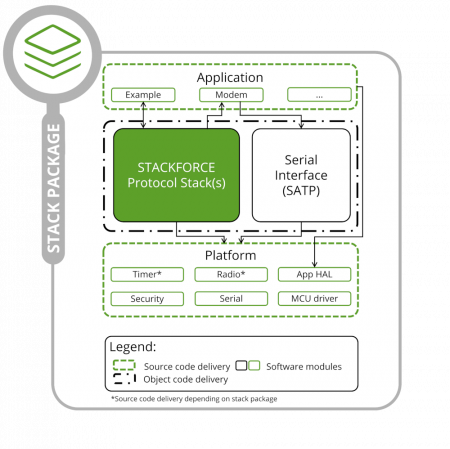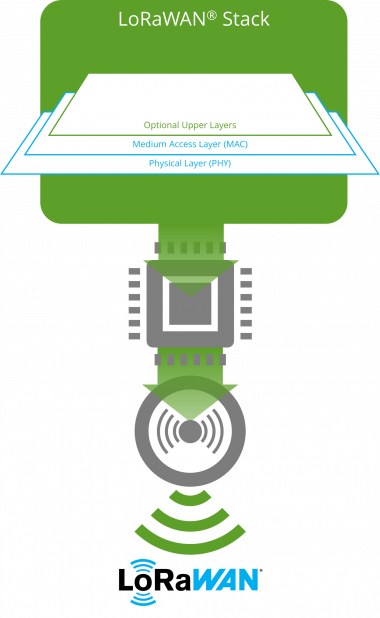LoRaWAN® v1.0.4
Single Stack
Key Features

Compliant to LoRaWAN® Specification v1.0.4 and associated Regional Parameters

Designed for high-performance industrial use in complex environments

Industry proven in numerous IoT
applications worldwide

Pre-certification on various
reference hardware platforms
Your benefits with our stack package

Support & Maintenance
Long-term availability and maintenance of the stack as well as professional support with quick reaction times
Prepared for multi protocol applications
With a flexible and well-proven multi stack API for seamless migration to other protocol stacks, e. g. OMS®, mioty®
Platform Interface available as source code
- Customization and fine tuning of platform driver
- Customization of radio settings (e.g., frequency)
Strengthen the future viability of your devices with this stack
Protocol Stack Features
LoRaWAN® v1.0.4
Compliant to LoRaWAN® v1.0.4:
- Class A, B & C
- OTAA & ABP
- Pre-certified for several regions
- LoRaWAN® Regional Parameters v1.0.3:
- EU868
- US915
- AU915
- AS923
- Application Layer Support:
- LoRaWAN® Application Layer Clock Synchronization v1.0.0
- LoRaWAN® Remote Multicast Setup Specification v1.0.0
- LoRaWAN® Fragmented Data Block Transport v1.0.0
Available for the following hardware platforms

STMicroelectronics
STM32WL5/STM32WLE5
Technical Information

Supported Specifications
LORAWAN® v1.0.4 PROTOCOL STACK COMPLIANT ACCORDING
-
LoRaWAN® v1.0.4
-
LoRaWAN® Regional Parameters v1.0.3
Reference Hardware
- Nucleo-WL55JC
Memory Requirements

The code sizes described above specify the typical required memory for operating the full featured protocol stack as a library including related drivers. Values based on reference hardware. The RAM requirements for LoRaWAN® FUOTA are not included in the values, as these are very dependent on the application.
Contact us
Commercial Features
First level Support

High quality product

Easy comissioning & configuration

Warranty & maintenance


Do you have Questions?
We are happy to help you.
Our software products are very complex and even seemingly minor details can influence the scope of development services. For this reason, we would like to talk to you about your project.





